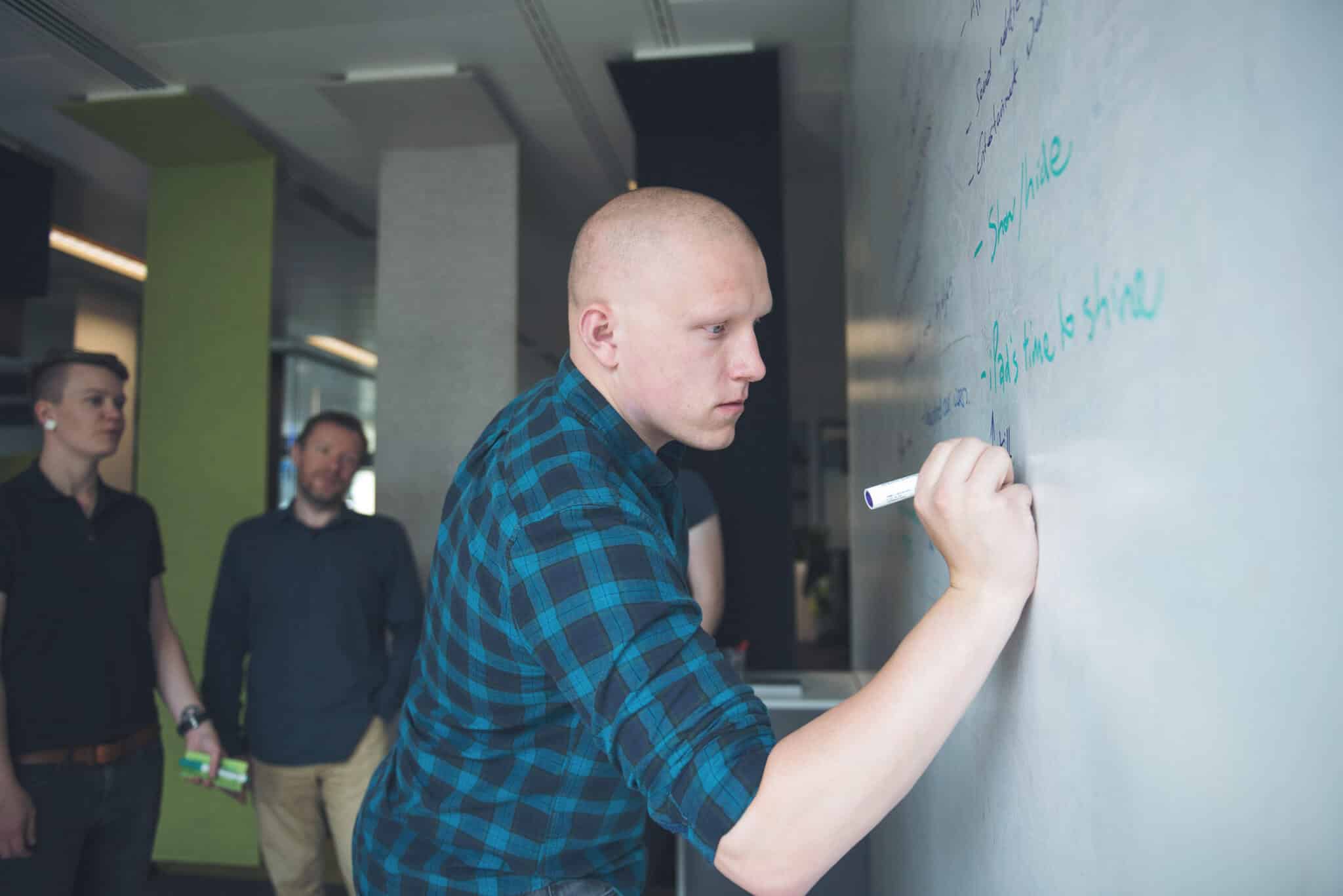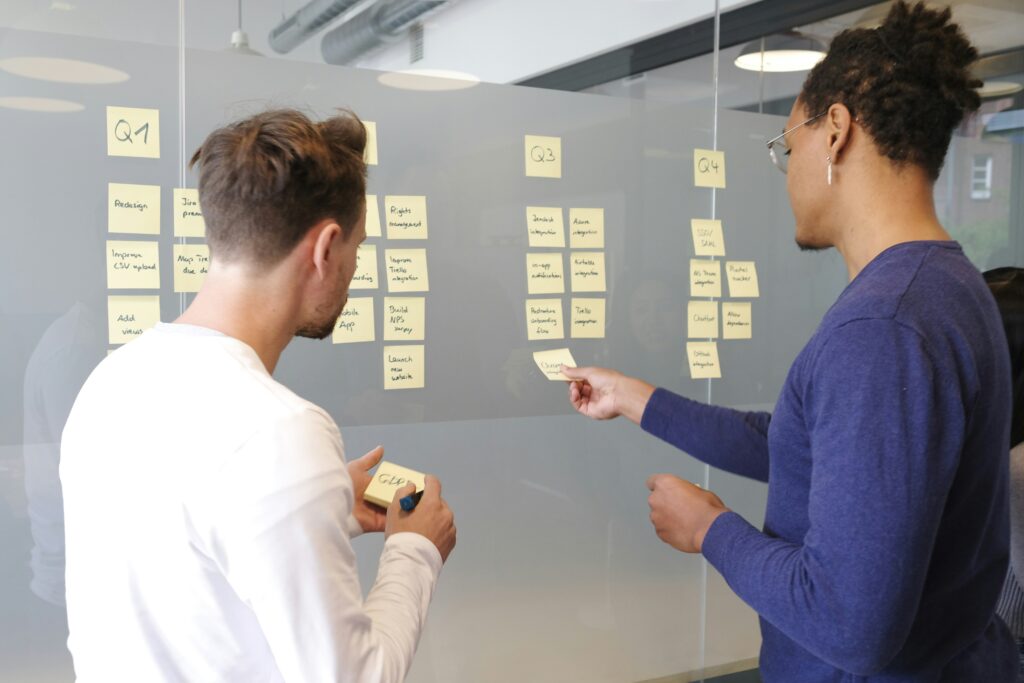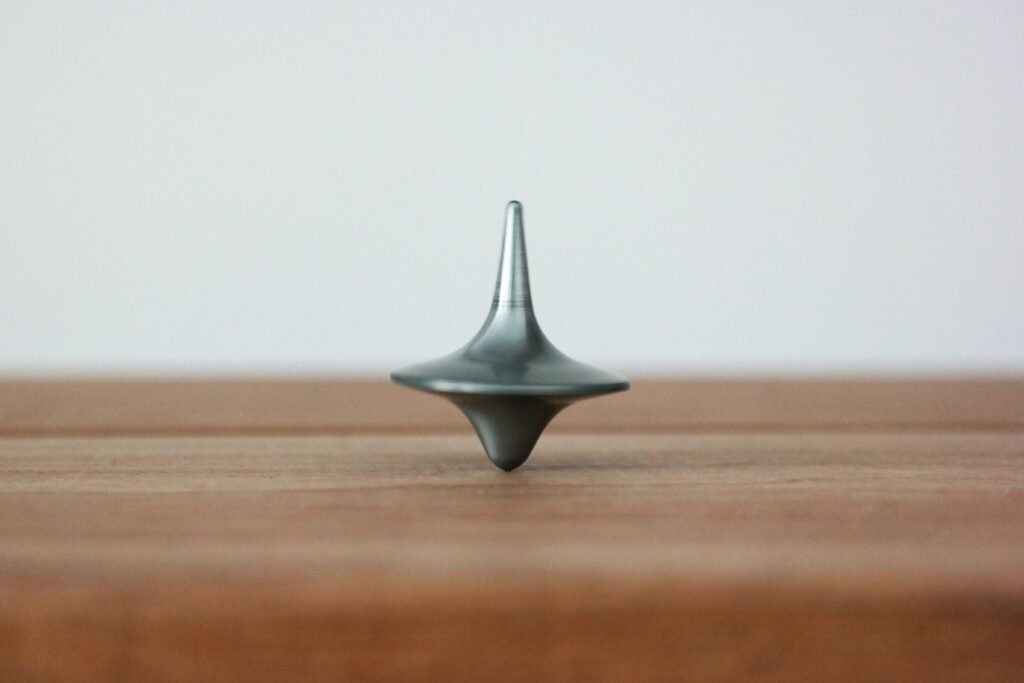This post is part of a series of interviews that we are conducting with product leaders across various industries. In this interview series, product leaders share their advice with their fellow product managers. We hope this series will shed light on trends and challenges in the profession, and be helpful to new and experienced product managers alike.
The following is a conversation with Chris Leckie, Product Design Director at FanDuel, a fantasy sports company. Chris has been at FanDuel for two years — or “two NFLs” as FanDuel employees would say — during which time the company has grown rapidly and implemented new processes to accommodate their distributed teams.
Tweet This:
“Listen to our interview with Chris Leckie of FanDuel and learn about the state of product design.”
We talked to Chris about the maturation of product design as a discipline, and about how FanDuel has transitioned from employing a few siloed designers to embedding designers in their cross-functional teams. We also discussed the skills that make designers successful and some design trends we can expect to see in 2017. Listen to our full conversation and learn what Apple and Uber in have common (hint: they’ve both invested heavily in beautiful user experiences), why Amazon’s Alexa represents the next frontier in design, and much more.
Also in this episode:
- Transitioning from a hands-on design role to a leadership role
- Building trust and unity when your team is distributed across the Atlantic
- Why friction between designers and product managers is a good thing
Listen to the full interview or, if you prefer, read the transcript below.
Full Interview Transcript:
ProductPlan (PP): I’m here with Chris Leckie, Product Design Direction from FanDuel. Chris, thank you so much for being here this evening and doing this interview with us.
Chris Leckie (CL): No problem, it’s always my pleasure to be here.
PP: Please tell us a bit about yourself and what you do at FanDuel, and give a brief overview of FanDuel.
CL: I’m the Product Design Director at FanDuel — that’s traditionally taking control of the design of the products themselves, so that’s the iOS application, Android application, and web application. FanDuel is a fantasy sports company, more specifically, a daily fantasy sports company.
And I’m based in the Edinburgh office in Scotland. I think what a lot of people don’t realize about FanDuel is that it was actually co-founded in Scotland before we opened up our New York headquarters. So we’re kind of split up. We have a really unique situation where engineering, product design, a little bit of UX, and project management is in our base and skull on the cross, our two offices in Edinburgh and Glasgow.
And then, we have product, marketing, and UX based out of New York. We’ve got customer service in Orlando, and then we’ve got some marketing down in LA as well. So it’s really split across the board, which presents nice opportunities for travel and meeting other people, but also some unique problems that come along with that.
Transatlantic relationships and just generally working together. We don’t have the ability to sit together all the time, so we have to adapt our processes a little bit.
PP: Very interesting. Being from Europe myself, and living in the US, I have to ask the question: What is more popular on the FanDuel platform? Is it American football or is it European football?
CL: Well, I mean, we didn’t actually even do European football until very recently. When I originally joined FanDuel, which is just coming up on two years ago, we only offered American sports, and, at that time, we’d done some market research on the possibility of launching a UK-oriented application.
It’s something we’d wanted to do for a while. It’s our home turf. We’d done the American thing and we wanted to open it up a little bit. We did exactly that. We had a separate project. We did an entirely new product, instead of just working on the original code base that we had available.
And we launched the EPL, which is the English Premier League, application for iOS, Android, and web in the UK. Subsequently, because we share the same sort of backend, we were able to launch EPL in the States as well. It’s still a minority sport for us. NFL is definitely like our Amazon at Christmas moment.
It’s funny, you’ll find a lot of people actually identify themselves and how long they’ve worked for the company by how many NFLs they’ve experienced. So it’s like, how long have you been here? Two NFL’s.
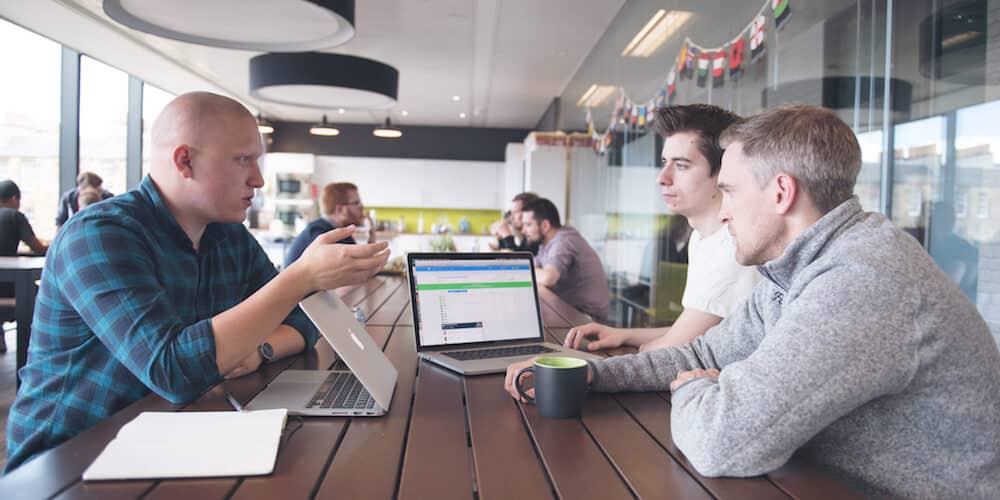
PP: Earlier you mentioned about that FanDuel is a very distributed company, and I know FanDuel has grown quite a bit over the last years. How has that growth impacted your team? In particular, the different product managers and other designers that you’re working with? What are some of the processes that you had to put in place in order to successfully collaborate with other stakeholders?
CL: It’s a really interesting question. It came with its own unique set of challenges. I think anyone will attest to the fact that growing is difficult. I’m having to deal with that process.
I’d like to say that everything went really nice and smoothly for us, but actually, it was quite bumpy. We grew really, really quickly, and we had to work as we were growing to set these processes in place to facilitate growth.
I mean, if I use design as an example, when I joined, there were only a couple of product designers on the team. FanDuel, when they were scaling the teams, made a conscious effort to scale engineering and marketing and things like that first of all. They did that because they wanted to insure that they had a company that was able to support a larger design team.
When I tell this to designers, they’re like, well, that’s not what I believe — I think you should have a really big design team. A lot of people talk about this engineering/design balance. We didn’t do that, and I think it was the right thing to do.
When I joined we had this traditional view of design being this walled garden and it was quite wonderful. They would make some designs, and then they would throw it over the wall to engineering. There was no collaboration. So we knew we needed to fix this. We knew we needed to open up our processes, and this wasn’t going be an overnight fix. But we needed to get immediate things in, so we opened up a variety of different tools. We used Wake, which is effectively like a very strict version of Pinterest where designers can share everything that they’re working on. You needed to share early and you needed to share often, so everyone in the company had access to this. Immediately there was visibility into what was going on.
We opened up reviews, and then we started implementing a more stream-based way of working. When I say a stream, a common similarity is with the tribes and squads model. For those that don’t know, effectively it’s a cross-discipline team that is assigned to an area of the business. For instance, we were working on, at that time, private leagues, which we call Friends Mode. It’s effectively a social way of playing on FanDuel that we never really had before.
Some of the processes we put in place as well were things like design sprints, and as I mentioned, we have cross-team reviews and we have showcases. All of these things were designed to impact inclusivity and collaboration.
And it’s something that we’re still working on. Our streams are getting quite big, so we’re looking at exploring splitting them into two, which is more akin to the tribes and squads model. We’re constantly working on it. I don’t think you’re ever going to have it totally perfect. We’re always willing to change based on our circumstances.
PP: I’ve heard about the squad model quite a bit. Actually, we’ve covered it here on the ProductPlan blog before. Spotify was one of the companies that really promoted the model. How many different squads do you have at FanDuel, and how many different people are part of them, and what types of job functions are part of a squad?
CL: At FanDuel we call them streams, but they’re quite similar. I guess a stream would be more applicable to a tribe in the tribes and squads model. I think we have about five streams, off the top of my head, and they change.
They could change quarterly, or they could change yearly, based on the company’s OKRs and what we’re trying to achieve. Our social one is probably the longest-running one, because we’re very, very committed to doubling what we started there. We have other ones centered around, for instance, a new sport. We’ve announced that we’re going to be launching golf in the product.
And then we have other ones based on back-office compliance, which is a really big thing for us. States set up particular rules that we are being legislated on as a company. We need to ensure that we’re abiding by state law, so our compliance team works to ensure that we are completely compliant in every single state.
And then we have some other ones. There’s native revenue, which will work on improving revenue in our native platforms. But, like I said, these can change every quarter so we need to ensure that we have processes in place to facilitate people moving about.
PP: So what types of members are part of those streams? It sounds like a designer, and probably people from the development team I would assume?
CL: It’s effectively a completely cross-platform team. The way I have the design team set up right now is that I have at least two designers on a stream. And the idea there is that they can work as a unit. There’s always a designer that can work with another designer and they can bounce ideas off of each other.
One thing we used to have was a traditional split on mobile versus web. They would work on iOS, iPad, Android, or they would work on a web, but we’ve slowly moved away from that model. The idea now is that a designer will cover everything, so they can really rely on each other to bounce ideas back and forth without having to split up their work in any particular way.
Then we have our front-end engineers, backend engineers, a business analyst, a project manager, and a product owner. So it’s effectively that kind of setup, and depending on the stream requirements, we might be more heavily loaded on one rather than the other.
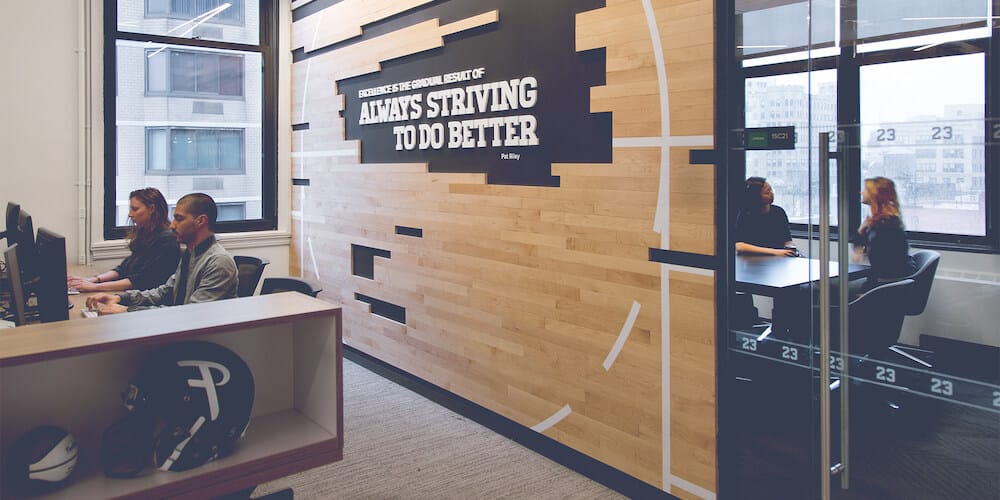
PP: I know that before you joined FanDuel, you were working for RightScale, an IT management B2B company. And now you’re working for FanDuel, and ultimately selling to consumers. How does design differ working for a B2B versus a B2C company, if at all?
CL: In a lot of ways they’re actually very similar. At the end of the day, you’re trying to design something to accomplish a task for a particular person, an end-user. So there’s always that user-orientated process.
But I think the one biggest difference is the access to users, or certainly, that’s been my experience anyway. At FanDuel, we have millions of users and we have users coming into the New York office almost every single day. That gives us a really nice forum for presenting anything we’re thinking about, or anything we’re working on, and getting early feedback. Early feedback is critical to ensuring that we’re building something that actually is for the users. We know if we’re going in the wrong direction very, very quickly.
In a B2B business, what we tended to find was that people were incredibly busy, and they bought because they wanted to accomplish a task. Trying to get their time was incredibly difficult, so you didn’t always have the opportunity to speak to people that you wanted to.
So, and if I use RightScale as an example, I was working on the analytics application, and we would have CFOs using it. Anything that they could give us would be really beneficial, but you can imagine how busy a CFO is. Getting that feedback was quite difficult, so you had to run on your intuition a lot more. Which was good and bad, I guess. You were more liable to make mistakes. For me, I would say that’s the biggest difference. Fundamental design is quite similar.
PP: You talked about customer interviews a little bit, which I assume is probably a very important skill for a designer. If you could only pick one skill, what would you say is the most important skill for a designer to have?
CL: There are a few, but if I had to pick one, I would say empathy.
The ability to put yourself in the shoes of the user — and it sounds like a very simple thing to do, but proper empathy is actually quite difficult. We’re in a situation — and when I say we, I mean the populace of product managers, product owners, designers, developers, etc. — where we’re in our little bubble of understanding. We don’t actually pick up an application or website and fumble about a little bit until we understand it. Whereas your traditional end-user does. I think it’s easy to say that we can put ourselves in their shoes, and we understand that, but experience tells me that’s not the case.
A really good designer is able to do that. And I think it bleeds outside of just empathy for the user’s perspective, and also into empathy for how other people in the company work — how you interact with your team members and understanding their requirements versus your requirements.
PP: It sounds like there were a couple more skills that you feel are important for a designer. What were some of the other ones that came to mind when I asked that question?
CL: Well, I guess as you step beyond empathy into actually trying to solve a problem, the problem-solving aspect becomes an important one.
Designers aren’t just people who put a skin on things and make them pretty. They need to take an idea and put form around it, and then create an experience that is incredibly simple, even though some of these things are inherently complex. You need to ensure that you’re actually able to solve the problem.
So problem-solving is a huge one. Communication, as I sort alluded to before, is important as well. And that’s not just communication when you’re doing user interviews, it’s actually communicating your ideas, communicating your work effectively, and just being able to speak to people. It’s a huge part of designing and it’s only becoming a bigger part of design as our roles start to shift and evolve.
A couple of others ones might be the traditional keen eye for detail. A designer needs to be able to look at something and — it’s that sort of gut instinct — know if it looks right or wrong. This is different from personal taste because personal taste is also a big one, but your more traditional trend designers are able to look at typographic hierarchies, alignment, and these little things that you need to stay on top of if you want a really polished application. If you get those fundamentals right, it sets you up with a really nice system that will bleed throughout your products, so you need that keen eye for detail.
And then the last one, it’s quite a big one as well, is the ability to take feedback. Most people don’t like getting negative feedback, but it’s a big part of a designer’s job because people have different views on what good design is.
You could create something that’s actually beautiful, but someone is just not going to like it and they’re going to give you some really negative feedback, and you need to be able to take that on. You need to peck through it and decide which parts you really need to listen to and take into account — tweaks or changes or whatever you need to do to make the product better.
PP: Even if you master all those skills like you do, there’s always challenges we encounter. What’s a challenge that you’ve encountered in design, and how did you overcome it?
CL: Every day is a new challenge. There’s always something. I don’t think I could point to one particular challenge by itself, but if I were going pick one off the top of my head, I would probably say it was the transition from being a traditional product UI general designer, whatever title you want to put on that, into more of a leadership position.
I was basically picking myself up and putting myself in a position where things were less about myself and more about the team as a whole. I was doing more management led stuff as well. I’ll be honest, some of the feedback that I got, to begin with, wasn’t great.
I had to take that feedback and change the way that I would approach working with individual people. It was about taking in everyone’s feedback independently and trying to put that together as what the team wanted and then trying to set a direction around it.
It’s something I think I’ve gotten a lot better at over the last couple of years. But every single day there’ll be something that crops up that I hadn’t anticipated — some demand from an area of business or some person on the team who is having a unique challenge that I’ve never ever actually dealt with before. And how I deal with that, from their perspective, and ensure that they feel like their needs are being met and they’re happy as a person and that I’m not actually having a detrimental impact on the team as a whole — it’s definitely an interesting challenge. It’s something that, when I started as a designer, I never thought that I would get satisfaction from that side of it.
I always felt that I needed to be crafting something constantly. I always wanted to be designing something or involved with the team at that level. But I get a lot of satisfaction from trying to make other designers’ jobs easier. I want to remove any level of friction that they have so that they can actually just accomplish what they need to accomplish. It was a challenge to get to a level where I thought I was doing it effectively, but the payoff was nice.
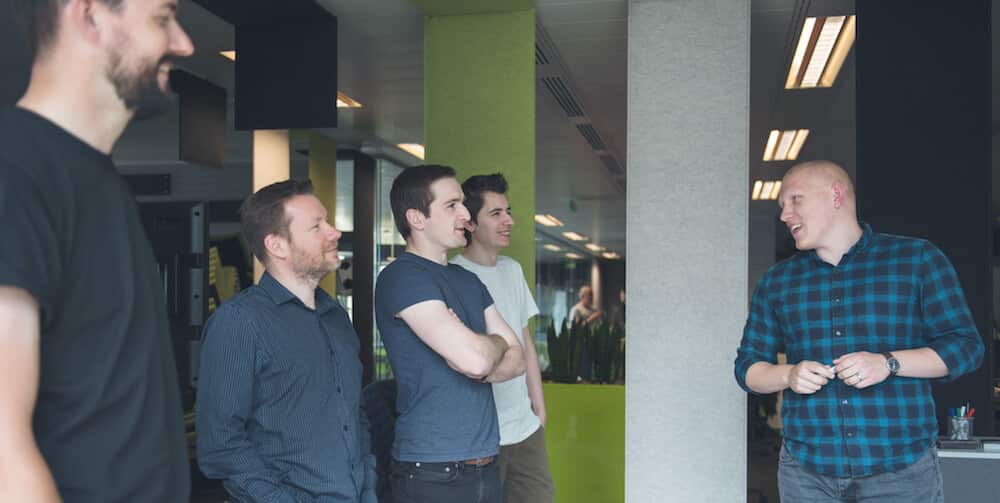
PP: It’s a challenge that I can personally relate to as well, and I think it is a very common challenge as one matures in their career.
CL: Yeah, I guess you never really know what’s next. I mean, that’s the whole point of a challenge, right, it comes at you.
I think, if I were to go back a little bit, one of the biggest things for me was when I went from a product designer to a lead to a director. I transitioned through those. One of the things that I didn’t do to begin with, that I realized more and more as time went on, was that I’d try to do too much myself. I tried to approach these problems and challenges by myself because I thought that if I accepted help, I was proving myself incapable of this role.
But that wasn’t actually the case, and it was actually Rob Jones who’s the VP of Design at FanDuel, he was really good at being a forum for feedback and giving really good advice. And I probably should have done that more to the begin with, but I didn’t. You can look back and say I should have done this, but you can’t change it.
PP: Was there some mentorship going on within FanDuel? Or was it just an epiphany that you had and you realized, hey I need to shift from being hands-on to being more of a lead?
CL: I think there was a progression, and yeah, it definitely was mentorship. Rob had gone through it himself. He was one of the co-founders of FanDuel, so he’s seen it from the very beginning into something that is so much bigger than what it started as.
I don’t think they even knew themselves how big FanDuel was going to be, or how much it was going to take off in the States. So, he got really unique experience from seeing this company bloom. I came in a bit later, obviously. He was really good at providing feedback for me.
He had gone through that change — the exact same one where he was taking on more of a leadership role and he was having to deal with people more. And I don’t think I leaned on him enough to begin with because I was trying to do it all myself. But there’s no shame in accepting help and advice, which I learned.
PP: For sure, but let’s talk about design some more. I’ve noticed that a very common problem is that design is subjective. It’s not unusual, if you have several stakeholders, for different opinions to be mentioned. What advice do you have for uniting stakeholders around a particular design direction, or even a particular design? And what do you do in order to get stakeholder buy-in?
CL: There are a few things that you can do. Number one is to build some level of trust. You need to ensure that there’s trust in your team, and also trust that, even though sometimes you will be asked or told something that you don’t necessarily agree with, it is the right thing to do.
As I mentioned, we’re broken up into streams. We’ll traditionally have a product owner, and some designers, and that stream needs to run as a unit. If there’s no trust there, you’re going to get friction. So anything that you can do to ensure that things run smoother, you should be doing it.
The meaty answer is to ensure that people sit together and that they’re socializing together — that’s how you build relationships. We can’t really do that in FanDuel, and other remote teams won’t be able to do that either. We have a massive ocean between us, so we need to do it in a variety of different ways. Some of it is process-driven, which we talked about before.
We decided that we were going do a few things. One of them was weekly reviews — the idea being that every single person in a stream has the ability to actually give feedback on design itself. Once a week we all get together. Now it could be that not everyone is going to attend, but there should be a representative from engineering, and a representative from QA, and a product owner and a project manager as well. So you’ve got a smattering of everyone, and design can present what it’s thinking. And then you can get the feedback from everyone.
If you do that, everyone feels involved in the process. Everyone feels like they’ve had their say in what’s going on. It gives the designer a forum to actually communicate what they’re thinking and to get feedback on focused areas. It’s incredibly useful.
We’ve also been building what we call a design system, which is effectively almost like a guidebook to what product design looks like at FanDuel. It explains each part. We’re having to balance our day-to-day workloads with the creation of this, so it’s not going as fast as we might like it to, but we are seeing constant progress on it. You’ll see other companies doing the same thing, as everyone seems to be talking about it right now.
Companies like Airbnb have whole teams dedicated to it. We don’t have the ability to do that, but what we do is carve off a little bit, and that gives people visibility into, not just this tiny little part that they’re looking at and giving feedback on, but rather the broader thing.
It’s like this holistic view of how all of this stuff stitches together. And that gives a little bit of foresight into the decisions that we make and why we make them, and it can help them give focused feedback as well. All these little things add up to a bigger picture, and people feel more involved as a whole. You’ll generally find that people are more united.
PP: For sure, I think relationships built on trust is definitely key.
CL: Yeah, and it takes time, and we will probably still stumble. I know we’ve stumbled, but the biggest piece of advice I could give you is, if you see a problem, deal with it head-on.
Sometimes the solution to that problem isn’t one that people will like, but you need to be resolute. You need to say that this decision is being made for a particular reason, and we think it will work. You just have to commit to it. And if you do that, then I think in the long run people will be more on board with it.
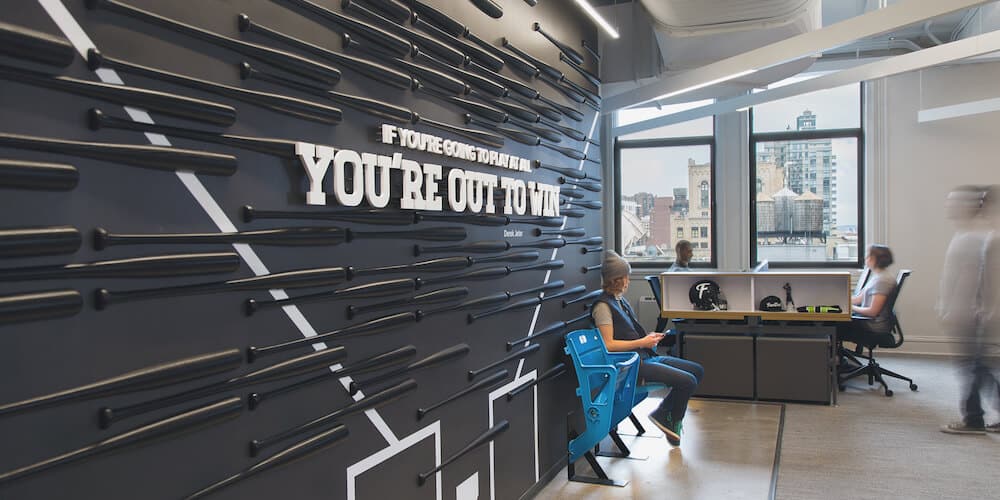
PP: Great advice, thank you. Chris, you have been involved with product design, in particular UX and UI design, for a number of years. Are there any common design principles that you think successful products have in common?
CL: Maybe not a principle per se, but what you will tend to see with successful products is a general belief in design as a whole. And this is often aided by a co-founder being a designer, or at least a member of the co-founders having some sort of design sensibilities.
If I track it back a little bit, you can always have the Apple example, right? Apple was able to sell products at a premium and offer sometimes less features than the competition, and they were able to do so because they’d invested in a beautiful product. Now, this is the same with any sort of a product-oriented company as well. You can use, for instance, Uber as an example. Part of Uber’s success isn’t that it just enables people to easily hail a cab, but also because it is such a seamless experience. They’ve invested in the experience as a whole.
That’s something we are very committed to at FanDuel as well. As I mentioned, we had quite a small design team before. We’ve bulked that up, and we’re very committed now to trying to build an experience that delivers a world-class entertainment product. Yeah, so it’s not necessarily a principle… I don’t think I’ve really answered your question properly.
PP: No, I think you did. If I may comment on something that I picked up on, and this really hit home because it was a revelation that I had at a conference I attended last year. Having worked most often for software companies and technology companies in my career, I feel like there is an immense focus on features and capabilities.
But when I went to the conference, something that really hit home was this idea of the experience as the product. There is so much more than just the application that makes up the customer experience. It’s also how they feel based on the design, and how they interact with customer support, for example. So I think that’s definitely something that people need to keep in mind. I think that’s what successful companies do — they understand there’s more to the product than the application itself.
CL: Yeah, I think you touched on a few bits there that are pretty important.
I don’t want to make it sound like it’s just all about the experience. There is a balance. You could have the most beautiful experience on the planet, but if you’re not fundamentally delivering what the user wants, then you don’t have a product.
And that’s the same with marketing as well. You can have the most beautiful product with all the features on the planet, but if you’re not marketing it correctly, then you don’t have the customers.
You need the whole thing, which is really difficult. If I use as an example a conversation with Wilson Miner, who is a creative director — he is incredibly committed to delivering a world-class experience, and he has. Most of the best bits of Spotify and Apple Music were born out of avid exploration and commitment to the user. But, at the end of the day, Spotify steamrolled them with marketing, and just general aggressiveness. I think it’s a prime example of a company that might have actually been better, but just didn’t have all the pieces in place.
PP: Yeah, that’s a good point. I mean, you have to have your bases covered for sure.
CL: Yeah, absolutely.
PP: Chris, you have been part of product management teams for a number of years now. I’ve seen friction between designers and product managers. Sometimes there are different goals for designers or different projects that they are working on, compared to product managers.
Have you seen those frictions, and if so, how have you overcome them? What can you recommend to our listeners for improving interactions between designers and product managers?
CL: I think you’re absolutely going to get friction. I don’t necessarily think friction is a bad thing. People should be opinionated if they’re truly driven and they believe in what they’re doing. They will have a strong opinion one way or another. But it’s being able to step back a little bit and question the fact of like, is my opinion really worth aggressively going after here?
I think it goes back to that trust aspect that we talked about before. If you work with someone and you trust them, and they are incredibly sure of what they are pushing, then you should be able to say, look, I might not agree with what you’re saying here, but I trust you and I trust that the decision that you are making is right for either the product or the team, and I will wholeheartedly go into it.
If I use RightScale as an example, we were a small team that was acquired, and we were working on an ancillary product. We had this really tight bond, and I worked with Hassan. He was in a product manager role at that time, and we had a very close relationship. I knew if he was coming to me, telling me something against what I was saying, that he was probably right.
And Hassan knew that if I was calling bullshit on whatever he was saying, he was like, right, I trust you. You were hired for a particular reason, so I should trust that you’re trying to do the right thing.
PP: Great answer. Like you said, it boils back down to relationships and trust. If you understand that you’re all working ultimately towards the same goal, then friction isn’t a bad thing because it means that both people are motivated and want to do the best for the product and company.
CL: Yeah, everybody has goals — everyone has something that they are being held to, and there might be a revenue figure that you need to hit. Sometimes you might be more willing to take the quick route or release something that might not quite be at a level that you would be comfortable with releasing, and for me, that’s the point at which a designer or a developer has to say, I don’t think we’re doing the right thing.
And that’s when you have a conversation about like, well, what is the right thing to do here? Do we delay this by a week, hoping it’s fundamentally better? Or is there really going to be that much of a detrimental impact? Do we need to get this out a little bit quicker?
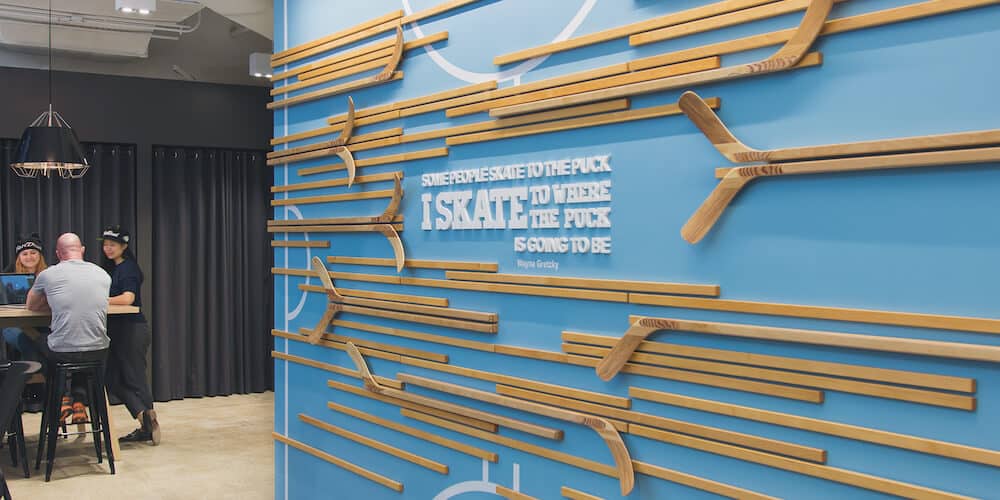
PP: Chris, we’ve arrived at our last question. We’re at the beginning of the year, and if you don’t mind sharing with our listeners your crystal ball — if you had to predict what we can expect this year or even in the next few years, what are some design trends that you feel pretty strongly about?
CL: Absolutely. It’s interesting, I’ve got two parts to this answer because I think there’s trends in the way that the people traditionally looked at trends. And then, there’s the other part, which I think is the growth and the maturity of the product design — like the discipline and what’s next there.
On your server-client traditional trends, I think we’ve hit a point now where there’s just a little bit of an evolution every single year. We transitioned to flat design. I think, piece by piece, we’ve kind of been moving back to adding depth, and sort of a physicality to interfaces. I mean the way that you look at material design, for instance, is all based on levels and cards.
That’s the way that we’re looking at it as well. And what I often say to some of the designers on the team is that I like to think that you can actually just take a piece of paper and cut up your interface, and then actually be able to move around. Think about it in a physical dimension, and how does this all stitch together?
And I think we’ll see a little bit more of that — it’s looking at things in more of a holistic manner.
How that plays out in actual visuals, I think, is open to interpretation. We’re seeing a lot of people playing with fire because they’re bringing in more shadows and things like that. Again, we’re seeing a lot more exploration and much more rich experiences. So to be honest, it can go any way, but I think we’ll just see a subtle evolution from what we’re already seeing now.
A lot of our decisions now are actually based on the operating systems that are provided to us by the likes of Google and Apple. So unless they do something completely drastic, then who knows? I guess there’s this whole augmented reality. Things sitting on the horizon with VR and whatnot which could throw things up in the air a little bit.
I think that maybe leads a little bit nicely into my next point, which is the maturation of the designer’s role and what a designer should be doing. What we’re seeing is that designers are less and less just your typical pixel pushers — where you’re handed a brief and you create a flat visual, and then you throw it back and that’s it, done.
I would say that 50% of your time is traditional design, and the other 50% of your time is driven around communication, documentation, working with stakeholders, and working with engineers. It’s a much more involved process.
And I can only see that continuing, especially as our tooling starts to change as well. We’re seeing a lot more prototyping tools that allow us to visualize things in new ways, and that’s going to change the way that we actually approach design as a whole. And then, you bring into the blend the fact we’re actually approaching a stage where we’re having to design for things that don’t actually have a physical interface.
Take, for example, Amazon Alexa — that is something that you are interfacing with. You still have this relationship with it, you still need to accomplish a task. That still requires a designer’s mindset, that empathy that I talked about before, of how do I accomplish this?
And there’s nothing being created there. It’s this whole new thing. And then, you’ve got virtual reality. It doesn’t sit within the confines of what we viewed as design before. And who knows what’s next? So it’s an evolving discipline, and I think we’re gonna see that more and more over the next year and onwards, as these new territories start to evolve.
PP: Yeah, I completely agree. It sounds like design will leave the screen, and go into all kinds of different devices and shapes.
CL: Yeah, it’s really interesting. I mean, you have Google Home as well. It’s a little bit 2001 how it’s going to take over what’s going on, but it’s interesting to think about. We’ll eventually some sort of a voice command in every single part of the room.
I’m going to use phones as an example. We traditionally have to always be willing to jump on new mediums. So we had our Apple Watch app out really, really quickly. We briefly went to smart TV stuff. We’re always willing to think about how we can use the platforms better.
And it’s interesting to think about how you could actually draft your team just by walking around the house, speaking to your Amazon Alexa. Or do we investigate sort messenger chatbots, where you’re actually just speaking to something in a very human way to accomplish the same task, but without the fanciness of this interface?
I think that’s gonna be a tough pill to swallow for a lot of people, because you’re not gonna have these days, months, whatever the timeline is, to craft this really beautiful visual experience, but you can craft this really nice human experience where the process is actually much nicer
PP: For sure. I think it’s a really interesting time to be a product manager or a designer. There’s so much disruptive technology going on right now that there are so many new opportunities available. It’s amazing.
Chris, thank you so much for your time. I really enjoyed our conservation and thank you so much for sharing your valuable advice with other product managers and designers.
CL: No problem at all. I hope it was at least a little bit useful. It was good having a chat about it anyway.
